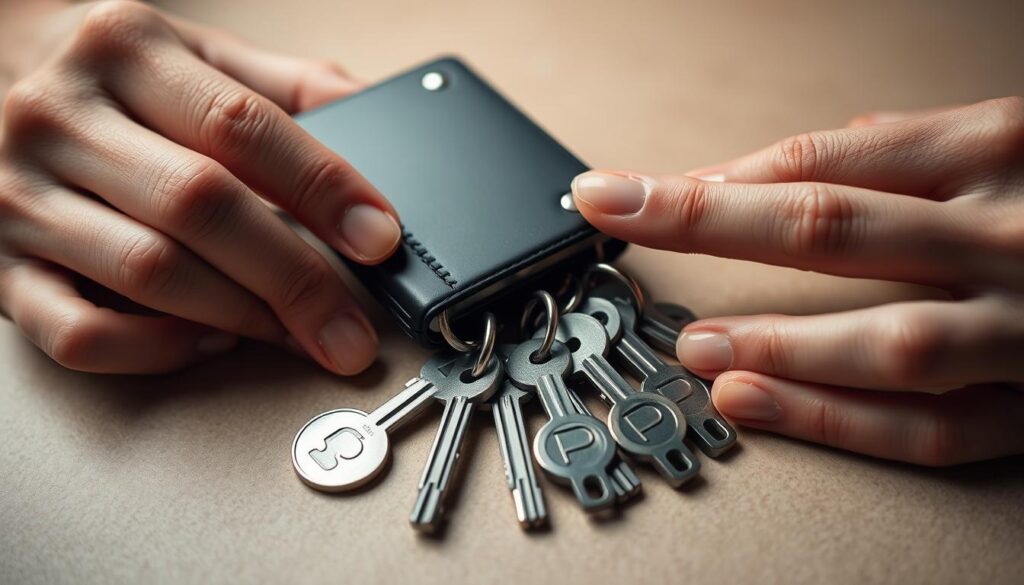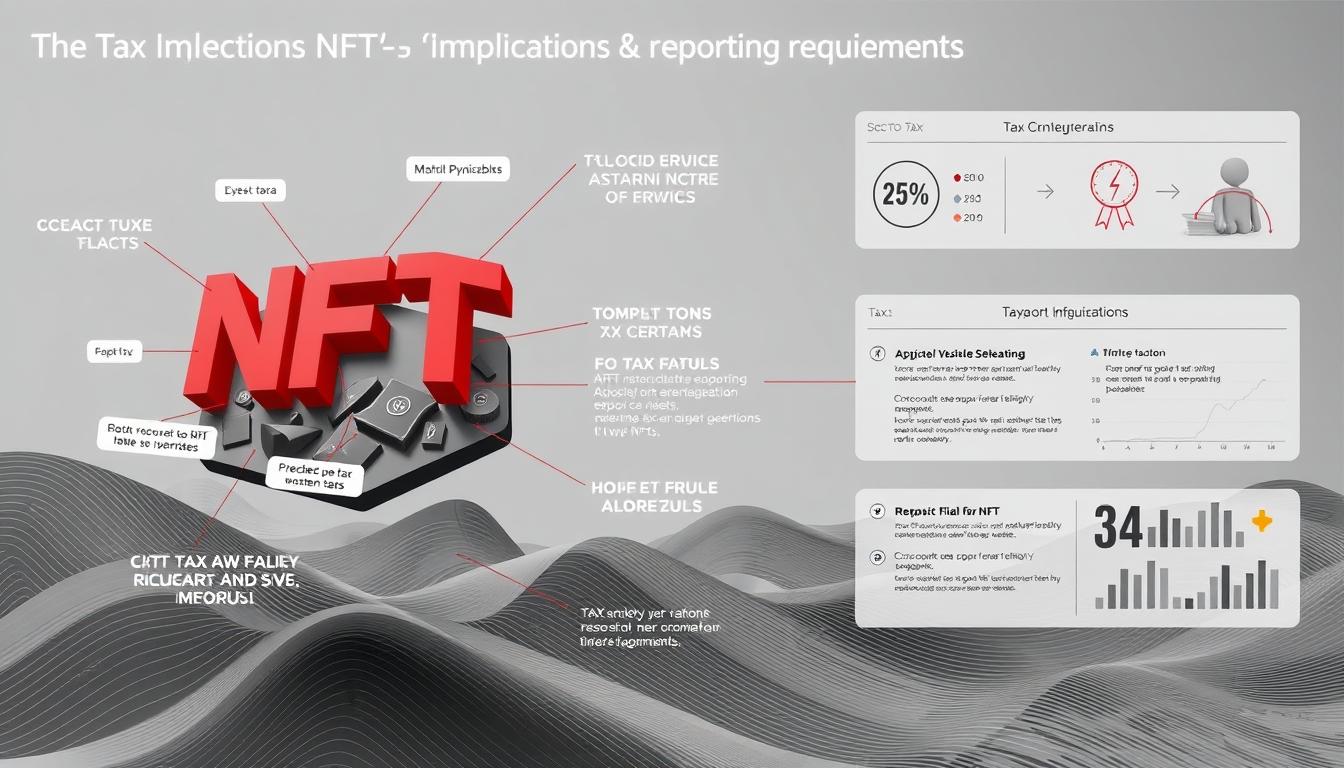Now Reading: Secure Your NFTs: NFT Wallet Security Best Practices and Tips
- 01
Secure Your NFTs: NFT Wallet Security Best Practices and Tips
Secure Your NFTs: NFT Wallet Security Best Practices and Tips

The value of blockchain-based collectibles continues to surge, with industry forecasts predicting a $230 billion market by 2030. As ownership of unique digital items grows more mainstream, malicious actors refine their tactics. Recent incidents highlight vulnerabilities: one investor lost $4 million through a compromised account in February 2023, while a popular storage platform suffered a $10 million breach weeks later.
High-profile cases like Kevin Rose’s $1 million loss and June’s $35 million platform exploit demonstrate evolving risks. These events prove that reliance on basic safeguards often fails against determined attackers. Modern collectors need more than hope – they require systematic defense strategies.
This guide explores practical approaches for shielding valuable digital holdings. We’ll analyze different storage methods, identify common attack vectors, and outline actionable countermeasures. Whether you’re a creator safeguarding original work or an investor managing a portfolio, these insights help build resilient protection systems.
Key Takeaways
- Digital collectible markets could triple in value within six years
- Cyberattacks targeting storage systems increased 850% since 2022
- Multi-layered protection strategies outperform single solutions
- Authentication controls prevent 92% of unauthorized access attempts
- Platform choice directly impacts vulnerability to emerging threats
Understanding NFT Wallets and Their Risks
The backbone of digital asset management lies in cryptographic key systems. These tools enable ownership verification and transfer capabilities for blockchain-based items. Without proper understanding of their mechanics, users risk irreversible losses.

Key Terms and Definitions
Crypto wallets act as gateways rather than storage units. They manage two critical elements: public identifiers and confidential authorization codes. Public versions function like email addresses for receiving items, while private counterparts operate as unforgeable digital signatures.
| Feature | Public Key | Private Key |
|---|---|---|
| Purpose | Receiving digital items | Approving transfers |
| Visibility | Shared freely | Never disclosed |
| Security Role | Transaction destination | Ownership proof |
| Example | 0x3F…b9A7 | EF82…9Q4p |
Seed phrases provide recovery access through 12-24 memorizable words. Digital signatures validate ownership during blockchain transactions. Hardware failures or accidental deletions become critical threats due to decentralized systems.
Common vulnerabilities include malicious software targeting authorization codes and fake platforms mimicking legitimate services. Human errors like misplacing recovery phrases account for 37% of permanent access losses according to 2023 blockchain incident reports.
NFT wallet security best practices and tips
Recent high-profile breaches reveal critical gaps in digital ownership protection strategies. Industry leaders now advocate for proactive measures shaped by real-world incidents. These approaches address both technical flaws and human error.
Why Experts Recommend These Measures
Dominic Lacovone’s $650,000 loss demonstrates how clever impersonation tactics bypass firewalls. Hackers posing as Apple Support accessed his cloud-stored recovery phrase. Similarly, RTFKT’s Nikhil Gopalani lost $175,000 when attackers compromised his Apple ID.

Learning From Major Breaches
The 2022 Slope incident exposed 4 million dollars through poor key management. Developers stored sensitive mnemonic phrases in plaintext logs. This oversight highlights risks in centralized data handling.
Three critical lessons emerge from these cases:
- Social engineering often targets service accounts linked to recovery tools
- Connected digital ecosystems create chain-reaction vulnerabilities
- Transparent logging protocols prevent accidental key exposure
Experts stress that 78% of breaches involve human error. A comprehensive security guide helps users avoid common pitfalls. Multi-factor authentication and hardware storage remain essential for high-value collections.
Cold Wallets vs. Hot Wallets: Storage Options for Digital Assets
Digital collectors face a critical choice between accessibility and protection when managing blockchain items. Two primary solutions dominate the market: internet-connected tools and offline devices. Each approach carries distinct advantages tailored to different user behaviors.

Evaluating Pros and Cons
Online-based systems enable instant transactions through browser plugins or mobile apps. These platforms integrate smoothly with trading venues, allowing quick swaps and purchases. However, their constant internet connection creates exposure points for sophisticated hackers.
| Feature | Hot Storage | Cold Storage |
|---|---|---|
| Accessibility | Instant access | Physical device required |
| Protection Level | Basic encryption | Military-grade isolation |
| Cost | Free | $50-$200+ |
| Control | Third-party involvement | Full ownership |
| Compatibility | 500+ currencies | Selected networks |
Choosing the Right Solution
Active traders often prefer web-based tools for their frictionless marketplace interactions. Platforms like MetaMask simplify frequent transactions but require vigilant monitoring. Long-term holders typically opt for tangible devices such as Ledger Nano X, which block remote access attempts.
A detailed comparison of storage solutions reveals hybrid strategies gaining popularity. Many users allocate 10-20% of their holdings to hot systems for liquidity, while securing bulk assets offline. This balanced approach minimizes risk without sacrificing trading flexibility.
Cost considerations play a key role. While hardware requires upfront investment, it becomes cost-effective for collections exceeding $1,000. Always match your storage method to both current needs and future growth plans.
Securing Your Private Keys and Seed Phrases
Digital ownership hinges on two critical elements: cryptographic codes and recovery tools. These components form the last line of defense against unauthorized entry. Proper handling determines whether your collection remains yours indefinitely.

Mastering Cryptographic Safeguards
Private authorization codes require military-grade protection. Never share screenshots or digital copies – treat them like nuclear launch codes. Industry standards recommend using BIP 39 protocols for generating 12-24 word recovery sequences.
Test backup systems before emergencies occur. Create mock recovery scenarios using empty storage tools. This verifies phrase accuracy and familiarizes you with restoration processes.
Physical Storage Solutions
Metal engraving kits outperform paper for long-term preservation. These $20-50 tools protect against fires and floods. Store multiple copies in separate locations – think safety deposit boxes and trusted relatives’ homes.
| Storage Method | Durability | Accessibility | Risk Level |
|---|---|---|---|
| Paper Note | Low (2 years) | High | Moderate |
| Metal Plate | High (50+ years) | Medium | Low |
| Encrypted USB | Medium (5 years) | High | High |
Cloud storage creates unnecessary exposure points. A 2023 Ledger study found 68% of digital breaches targeted online backups. For advanced security strategies, combine physical storage with biometric authentication on devices.
Enhancing Protection with Two-Factor Authentication and MFA
Cybercriminals bypass single-layer defenses in 83% of successful breaches, making multi-step verification essential. Modern verification systems add critical roadblocks that frustrate unauthorized access attempts. These tools transform basic login processes into fortified checkpoints.
Building Your Verification Shield
Time-sensitive codes and biometric checks create dynamic barriers against intruders. Authenticator apps like Google Authenticator generate changing numeric sequences that expire within seconds. Physical security keys such as YubiKey require USB/NFC confirmation for access.
| Method | Security Level | Ease of Use | Cost |
|---|---|---|---|
| SMS Codes | Basic | High | Free |
| Authenticator App | Advanced | Medium | Free |
| Hardware Key | Maximum | Low | $25-$70 |
| Biometrics | High | High | Device-dependent |
Leading platforms employ distinct approaches. Coinbase supports app-based codes and security keys, while MetaMask integrates with hardware devices. Always enable backup codes during setup – these one-time passwords rescue accounts if primary methods fail.
Biometric systems leverage unique physical traits for identity confirmation. Modern smartphones use fingerprint sensors and facial recognition that adapt to aging users. These biological markers prove harder to steal than traditional passwords.
Regularly review active sessions and connected devices. Remove unrecognized logins immediately. For high-value collections, combine multiple verification layers – like requiring both a security key and fingerprint scan.
Avoiding Phishing Attacks and Fraudulent NFT Scams
Digital collectors navigate a minefield of sophisticated deception tactics daily. Attackers craft convincing replicas of trusted platforms, often using urgency or exclusivity to bypass logical scrutiny. One notorious example involved cloned marketplace interfaces stealing $2.3 million in assets during Q1 2024.
Spotting Red Flags in Communications
Fraudulent messages often contain mismatched sender addresses or grammatical errors. Legitimate platforms never request recovery phrases via email or direct messages. The Frosties rug pull incident showed how anonymous teams can vanish after initial hype.
| Verification Technique | Valid Approach | Scam Indicator |
|---|---|---|
| Website Authentication | Padlock icon + “https://” | Missing security certificate |
| Social Media Offers | Official verified accounts | Unprompted collaboration DMs |
| Investment Promises | Transparent roadmaps | “Guaranteed returns” claims |
| Platform Communications | Bookmarked login pages | Links in unsolicited emails |
Pump-and-dump schemes frequently use fake trading volume charts. Check blockchain explorers for genuine transaction histories rather than relying on platform displays. Authentic projects maintain active developer communities across multiple channels.
Enable browser extensions that flag suspicious domains. Cross-reference any urgent security alerts through official support portals. When in doubt, pause and verify – rushed decisions often lead to irreversible losses.
Additional Strategies for Managing NFT Risks
Evolving threats demand layered approaches beyond basic safeguards. Advanced tools and disciplined habits create formidable barriers against modern attack methods.
Shared Authorization Systems
Multi-signature solutions require multiple approvals for transactions, drastically reducing unauthorized access potential. Teams managing high-value collections benefit from requiring 3-5 verified confirmations per action. This approach prevents single-point failures while maintaining operational flexibility.
Individual collectors can apply similar principles through asset distribution. Storing digital items across separate systems limits exposure during breaches. Treat each storage location like a safety deposit box – accessible only under specific conditions.
Proactive Maintenance Habits
Outdated applications account for 42% of successful cyber intrusions. Enable automatic updates for all blockchain-related tools to patch vulnerabilities swiftly. Pair this with quarterly security audits to identify potential weak points before exploitation occurs.
Public networks pose hidden dangers – always use encrypted connections when accessing digital holdings. Combine VPNs with firewall protections for public Wi-Fi scenarios. Remember: consistent vigilance trumps periodic overhauls in maintaining long-term safety.
These layered methods transform reactive defense into proactive asset stewardship. By combining technological solutions with disciplined routines, collectors build resilient systems capable of adapting to emerging threats.














